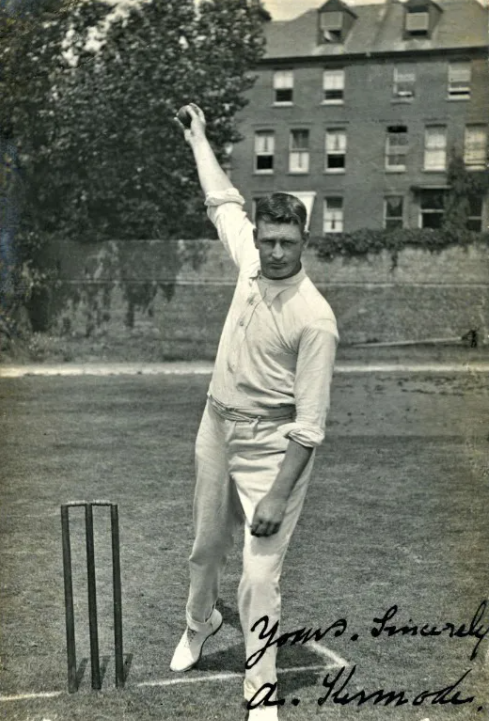A Bolt from the Blue: The Remarkable Rise of Alex Kermode
Pat Rodgers | January 30, 2023

Cricket selectors have been attracting criticism since at least the start of Test cricket when Fred Spofforth refused to play because his friend Billy Murdoch had been overlooked in the first Australian team. Seen in turn as too conservative, always playing favourites, picking the wrong Taylor, or choosing the worst team ever to tour, selectors have been accused of a range of crimes.
In October 1901, the New South Wales Cricket Association decided to make Monty Noble the sole selector of the State’s teams. In that capacity, he made an audacious decision that completely changed a young man’s life.
Alex Kermode was a 25-year-old Sydney labourer when Noble plucked him out of the Moore Park junior cricket association to play for New South Wales against Victoria in January 1902. In doing so, Noble completely passed over the normal pathway which saw Sydney 1st grade cricketers in the electoral competition chosen for New South Wales.
The circumstances surrounding Kermode’s selection were undoubtedly unusual. The 3rd Test match being played between England and Australia in Adelaide was a timeless game to be played until a result was achieved. It was not until the sixth day of the match on 23 January 1902 that a stirring four-wicket victory by Australia was secured. Noble was at the crease when the target of 315 was reached. The problem was that the New South Wales players were due to start a match against Victoria back in Sydney on 25 January. Noble requested a postponement to allow his state teammates time to travel back. In response, the New South Wales Cricket Association stubbornly and strangely made it clear that the match was to begin at noon on the scheduled day.
With two bowlers now required to replace himself and Bill Howell, Noble rejected the claims of the best credentialled candidate, the Indigenous fast bowler Jack Marsh. Instead, one position was filled by 18-year-old Albert ‘Tibby’ Cotter who made his first- class debut. This proved a wise choice as he would go on to have a fine career which included 21 Test matches. The other new bowler appeared to be a selection completely out of left field, however.
Alex Kermode had begun playing in the first year of the Moore Park junior association competition for Pyrmont in 1898. After transferring to the Tramway Club, his record was outstanding as he had taken 50 wickets at the scarcely believable average of 3.78 by Christmas 1901. Noble may have been aware of this but, more tellingly, Kermode frequently bowled at the nearby Sydney Cricket Ground nets where the Test all-rounder had been impressed with him. Kermode was also called upon to play for the Trustees of the Sydney Cricket Ground team who opposed the Sydney grade club with the bye in the 1st grade competition. Yet while Noble knew something of Kermode’s capabilities, it was felt that Noble had his “back up” and was simply being contrary when making the selection.
Whatever his motives, Noble’s gamble worked. By the time he had arrived back in Sydney, Kermode had taken 4 for 49 from 20 overs in the first innings in a 49-run victory. Whether this was a case of good luck or good management, it set Kermode on an incredible path because what occurred over the next few months was even more remarkable.
This is an extract from Pat Rodgers cricket book - A Bolt from the Blue: The Remarkable Rise of Alex Kermode
To purchase Pat's book - click here









